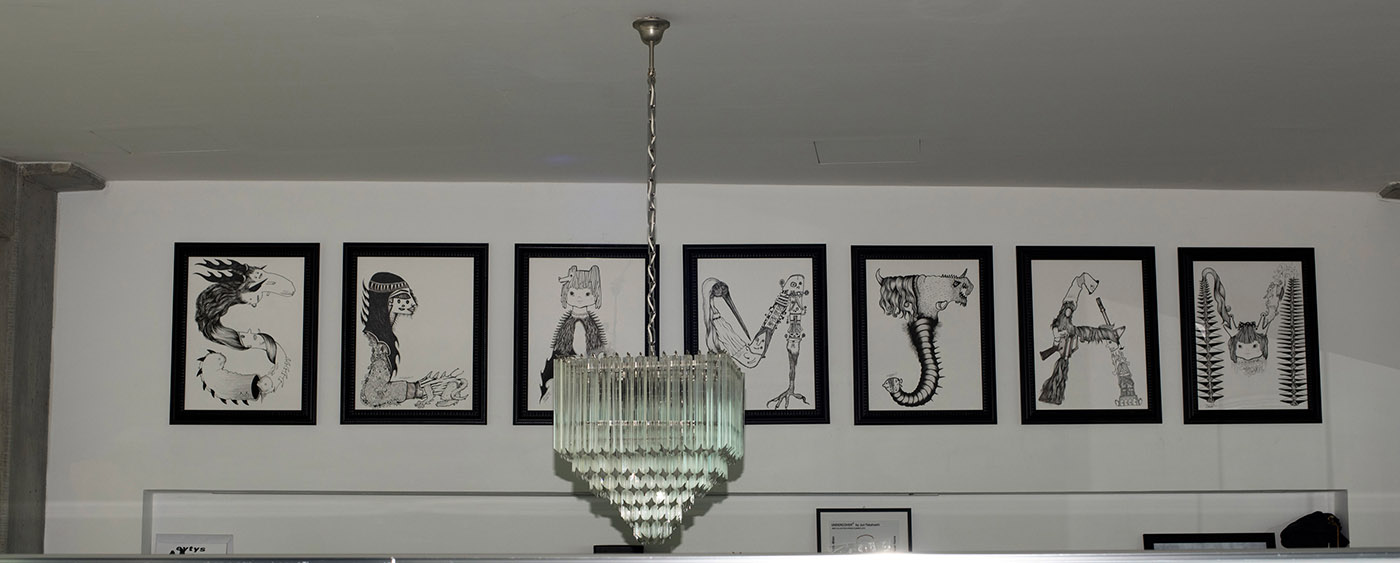Camilla Filippi
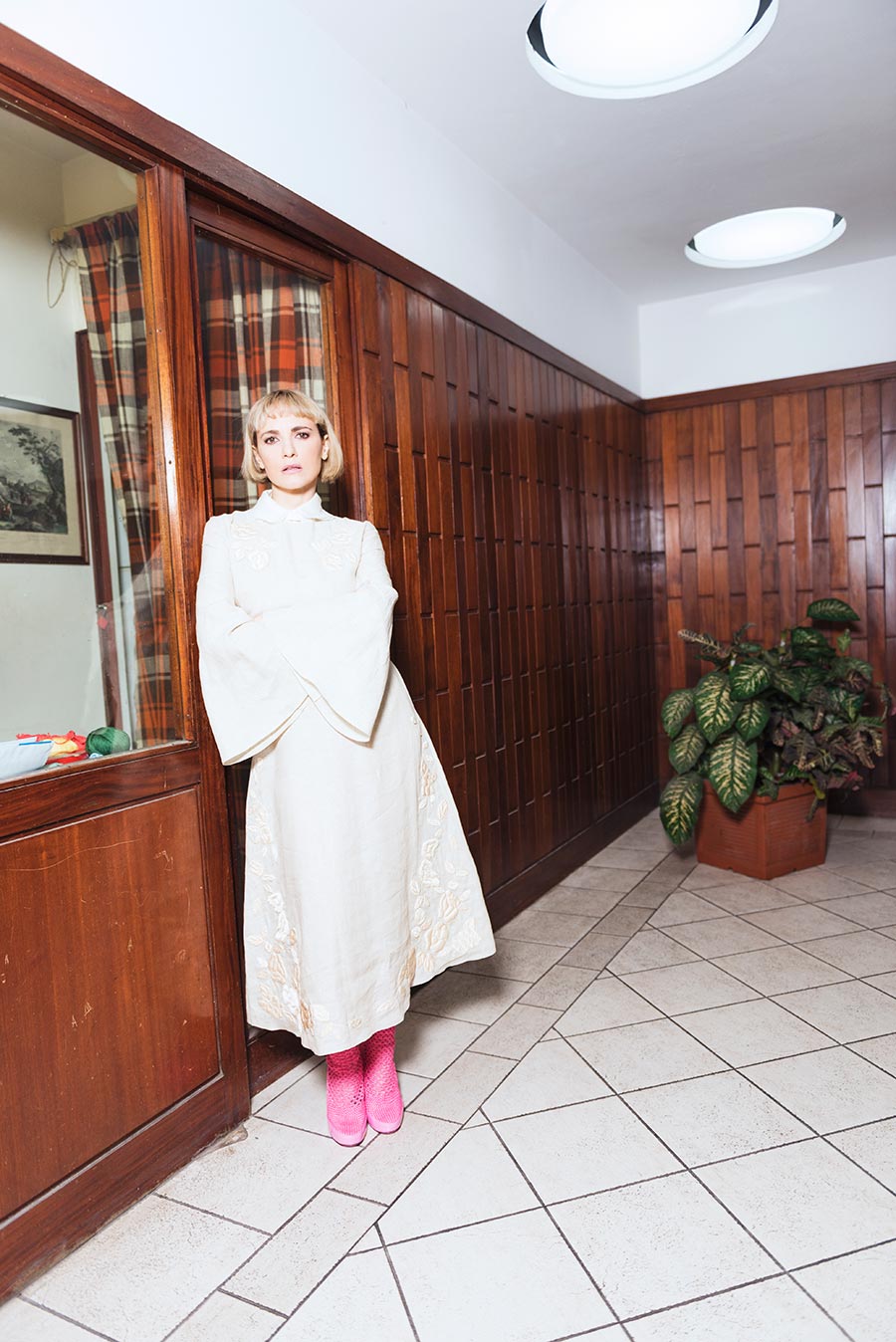

Actress Camilla Filippi has been present in our memory for almost 20 years, but she already started as a young girl, with commercial spots (as the one for Barilla, when she was just 12 years old, in 1993, where she appears, obviously around a laden table, together with an American guest, Kevin Sorbo, who later became famous as the Hercules on small screens, ed). How did the desire to devote yourself to the “seventh art” come about?
At school. When the schools still worked (laughs). I attended an experimental school, three days per week, in the afternoon, there were activities related to theater, visual education, computer technology. The passion was born there, and as a result I told my mother that I wanted to become an actress: a choice she supported, even though I was not part of a family linked in any way to the show business.
An admirable choice… Shouldn’t that be, after all, the role of a parent? Supporting children no matter how remote those choices may seem to us?
I was also very young and I am convinced that when you are 20, if you have a dream, after high school, it does not cost too much to try making it come true, to try to see how it goes. Even if it goes wrong, you have a life ahead to get back on the tracks…
The quality of your career path is in your eclecticism: you acted in films designed for TV, TV series, cinema’s movies, in comic and dramatic roles: what attracts you to a character? How do you choose the roles that belong to you?
Let’s dispel a myth: there are few actors who choose which roles to play. Of course, there are things that I don’t do, roles that I know won’t belong to me and so I don’t even go to auditions. But otherwise, we always try to give complexity and nuances to the character, regardless of the type of production. Being an actor means putting yourself in someone else’s shoes, experiencing tragedies or the most banal difficulties, eviscerating them.
Was there a character where you underestimated the psychological impact of its role or where you can say, after all, that you weren’t ready for?
I certainly underestimated the emotional impact of Stella, the protagonist of “La Stanza” (a thriller with horror traits that begins with the protagonist in a wedding dress, convinced to take her own life and stopped by a providential ringing at the door, ed). Psychologically it was very heavy. And she made me even more aware than before, on the fact that going into analysis is crucial, and should become natural for everyone, like putting on underwear before leaving the house.
After the Weinstein scandal, which broke out in 2015, a lot has changed, at least in appearance, in the world of Hollywood cinema. As an actress and woman with a successful career, what would you recommend to a young girl who would like to pursue your profession?
I would advise her to study, but also to live, because we tell stories about human beings, so the more personal experience you have, the greater your cultural and emotional baggage is, and the more we enrich our characters. And, another equally important thing I’d say to her, is to never be afraid to express her opinion.
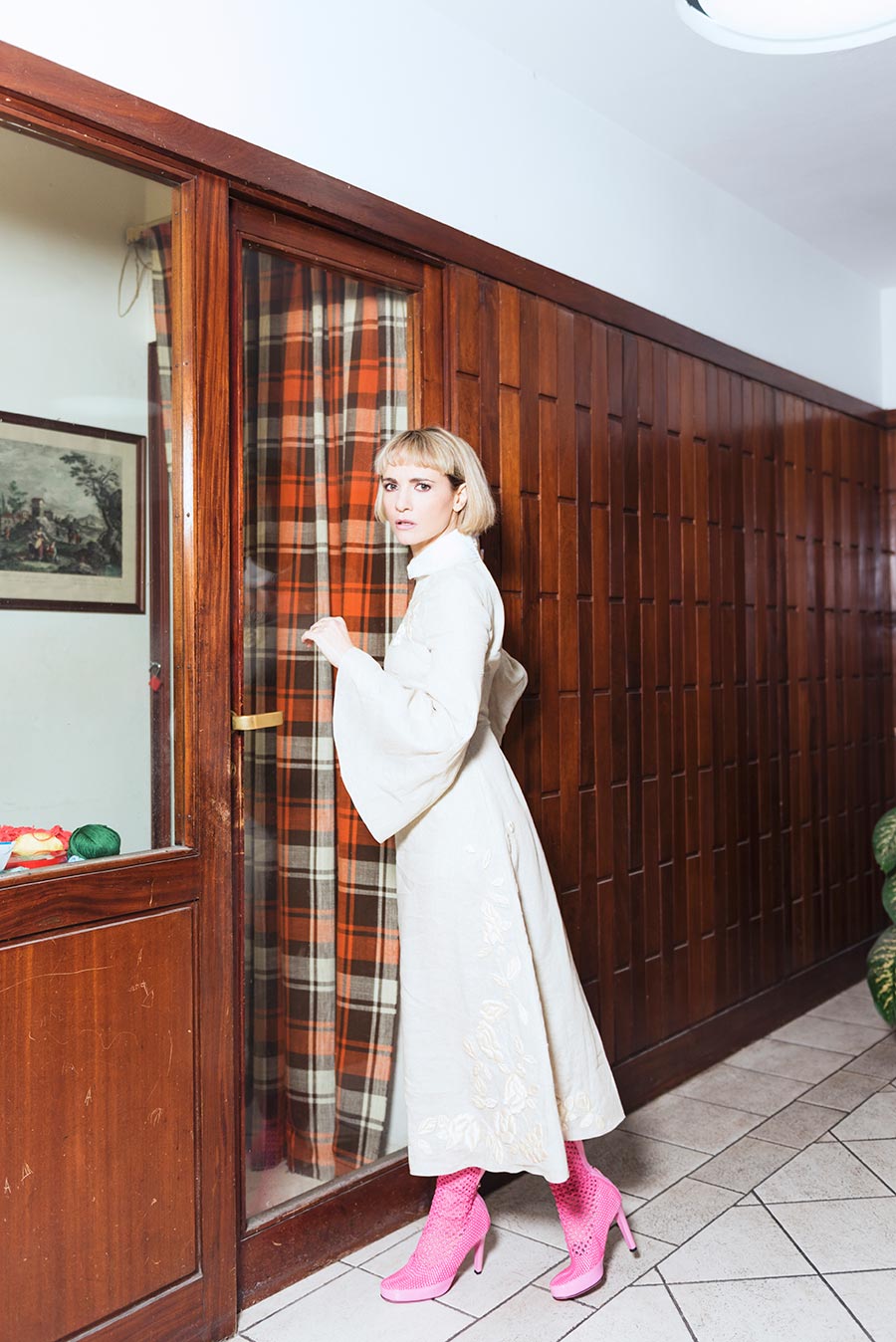
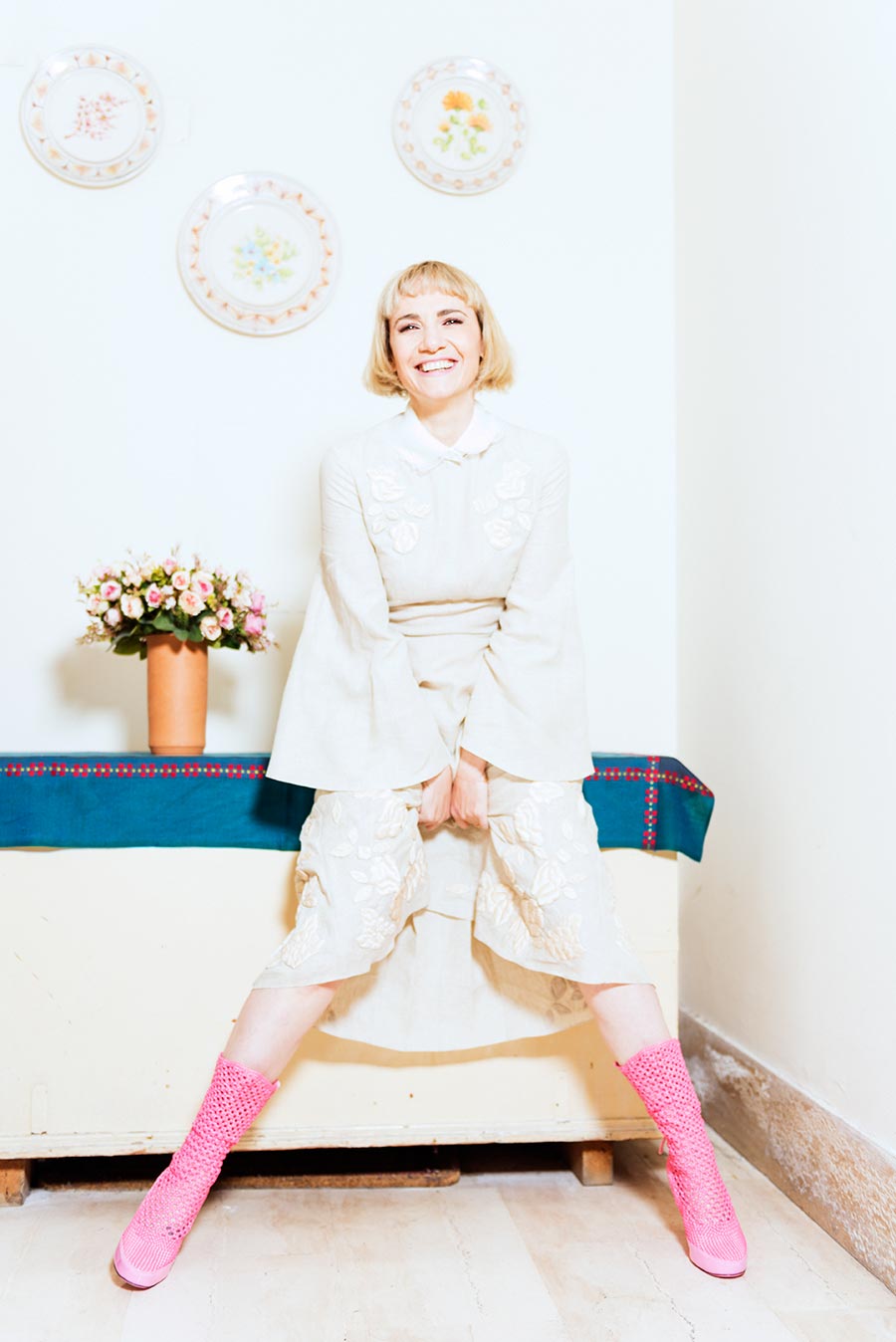
And to a younger yourself, with today’s experience, would you recommend anything?
I would tell her that it is okay: I have been always very consistent in my choices, I have been strong, thanks to my family formation: I was educated in dignity. Today a lot of communication and promotion of one’s work also passes through social media.
What is your relationship with them?
I only use Instagram, I left everything else. If it weren’t anachronistic, I wouldn’t use that either. But it has a ‘political’ value when there is a following. I believe that unfortunately the great fault of social media is having set free a certain neglect of ignorance. We are no longer ashamed of it. A thing that scares me but which unfortunately we have to live with. As a young girl I often felt like a goat, I tended to shut up if I didn’t know what we were talking about, then I went to inform myself, studying, to fill what I saw as gaps. A task that nowadays should belong to the school. It should, at least…
Recent Golden Globes nominations, thanks to the pandemic, given up in the face of the power of products made by Amazon and Netflix, to which the Hollywood Academy waged a ruthless war in recent years. Do you find that there are qualitative differences between productions created for cinema and those made for and often by the giants of streaming distribution?
Right now I don’t think there is a qualitative or narrative difference. The approach I have, as an actress, is the same, I put the same quality into it. Of course, as a spectator the experience is different, even if after a year of pandemic, thanks to the arrival of high quality serial products, I realized that sitting on the couch and spending an hour and a half in front of the screen is complex. I miss a lot going to the cinema as a spectator, I don’t even remember the last film I saw in the hall anymore…
And at home instead?
“Padre Nostro”, with Pierfrancesco Favino. I also started to watch the second season of “Big Little Lies”, I find it a masterpiece, because it is a project realized only by women. It would be wonderful to do something similar in Italy, but on one hand there is a certain snobbery, on the other we are far behind: the woman in Italian products, film or television, is always someone’s mother, wife, sister.
Is Italian cinema still very macho?
I’ll tell you something: in “La Stanza” movie, I am very traumatized by events, without make-up tricks, messy hair. On the narrative side, it would have been illogical to play that role fully dressed and made up, after all. Two different men I know, watching the film, then told me: «Damn! How ugly they made you». They would never even thought that of a man. They would compliment him on how he got into the part. And the saddest thing is that it came out from two extremely intelligent people. Just to tell you which level we are in.
There’s not just cinema in your life. You also realized exhibitions at Palazzo Collicola (#psychedelicbreakfast, in 2015), you wrote a book (“La Sorella Sbagliata”, Harper Collins, in 2020, where she tackles disability starting from a personal and family story, ed). Willingness to catharsis or to express yourself through other arts?
I always thought that having chosen a specific path since I was a young girl did not mean foreclosing on the others. I am constantly looking for new ways to come up with my ideas, but I was quite afraid of “not being enough”. In that sense, my husband, who supported me a lot, was crucial, repeating to me the thing that my mother also often said to me: «at most they will say no to you». So now I’m writing the second book.
Before going to the set for the first take, or on the occasion of an important event, do you have any rituals?
No, I’m not superstitious at all. In order to respect the others, however, I avoid wearing purple, a color that is still very ostracized in cinema. There are some directors who send you back to the dressing room to change yourself if they see you arriving on set with something of that color.
Speaking about clothes, how important are they in defining the character, and how important are they in your private life?
For my work they are fundamental. When Massimo Parrini, the costume designer of “La Stanza”, pulled out the wedding dress that you see in the first scene, I thought he already defined the character. My role is related to water, so we worked a lot on transparencies and cold colors.
The wardrobe helps to outline the role in a fundamental way. In private life, I think fashion is another way of expressing one’s personality: some maisons create art, rather than clothes. Assuming that this past year hasn’t made us better, what did it teach you?
It taught me that I had too many things and that my environmental impact had to be reduced. I have no more detergents: I make soap at home, I buy vinegar to clean the windows and I plan the weekly shopping on Mondays, to avoid waste. These are small attentions that take longer to say than to do. We could spend less time on to our smartphones on social media, and dedicate ourselves to something else: to make 3 dispensers of 250 ml of detergent, you need just a bar of Marseille soap and 45 minutes of time, if you are really a beginner. And of course I didn’t buy anything during the sales period. If this pandemic frightened us, just think about 2050.
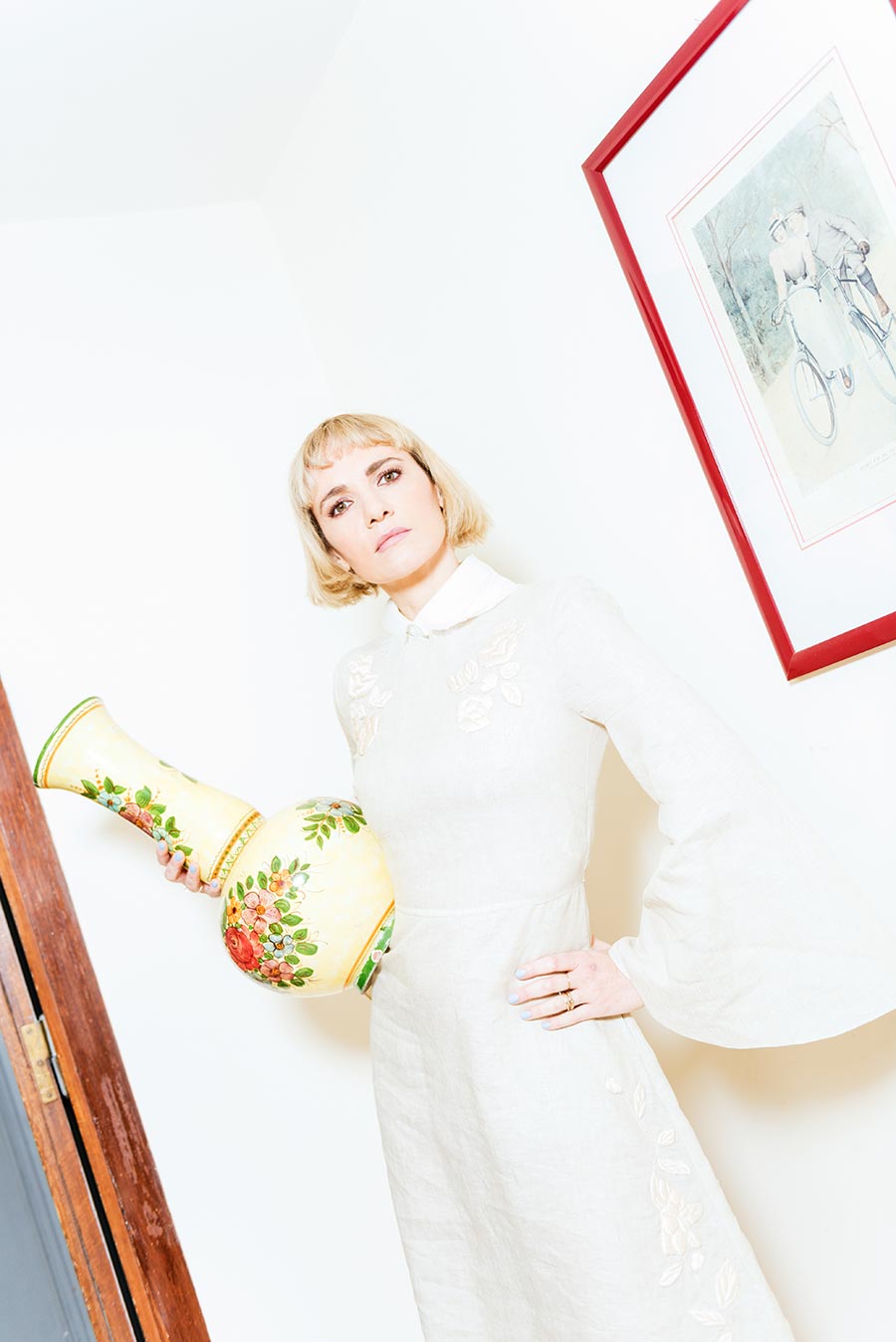
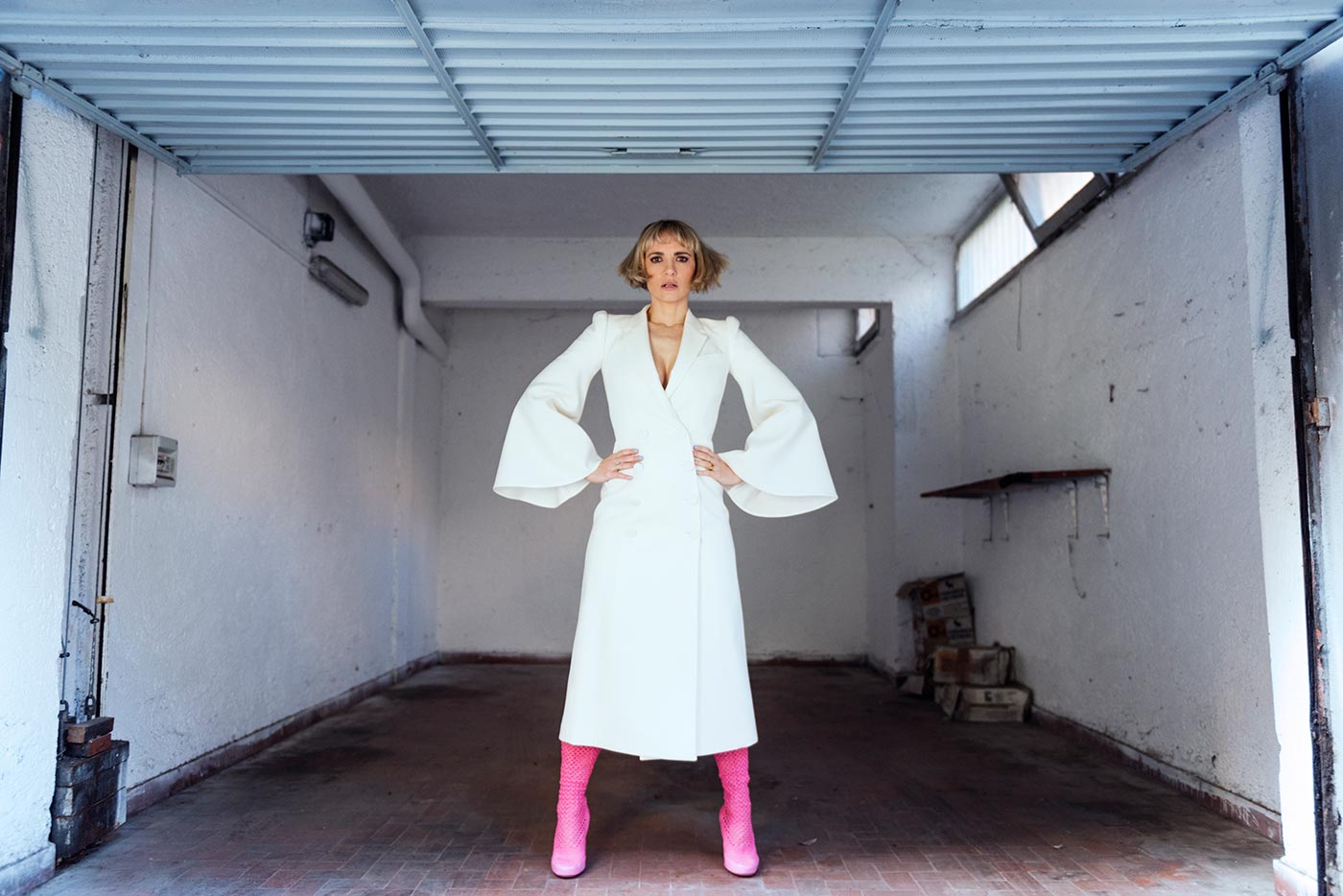
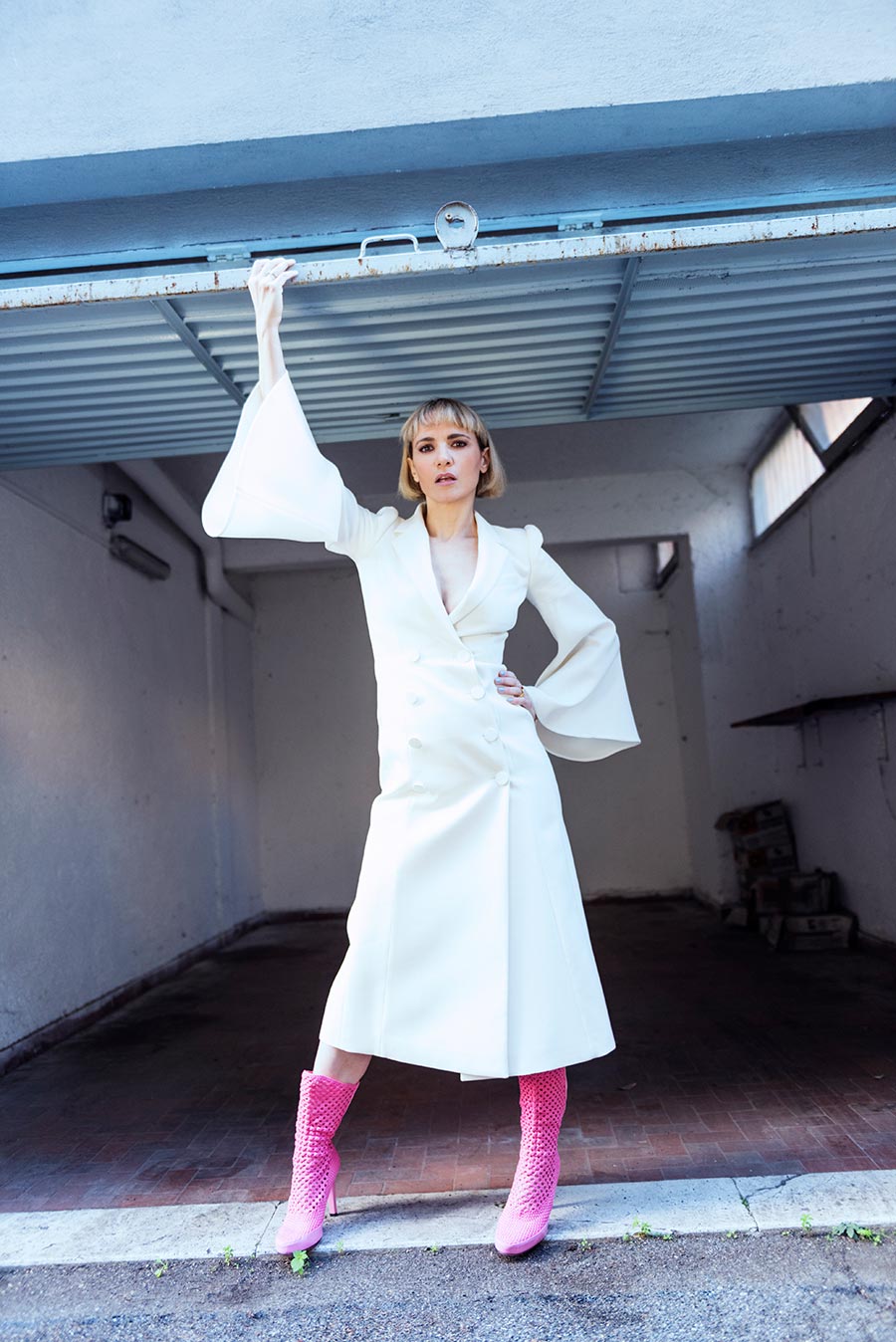
What will you do as soon as you can get out?
Go back to the restaurant. I like to go and try the starred restaurants around Italy, I went to Joia in Milan, the first starry vegetarian restaurant in Europe, and it was a 5 stars experience. On the plate it looked like it was dear meet and instead it was watermelon.
Are you passionate about cooking?
I find that it represents the sense of family, as a community, which you want to take care of with food. In fact, my kitchen is bigger than my living room.
If you think about it, even during a dinner, you spend more time in the first room than in the second.
I taught my children to cook, I want them to be independent. The eldest has a talented hand, but he lacks in patience: if a recipe is tasty the first time, the second he goes off the cuff without consulting the doses. However, some of his recipes entered the fixed menu at home, such as chicken slices breaded with cornflakes.
The Italian film tradition is full of films that take place around a table: which is his favorite?
“La Grande Abbuffata”, no doubt.
Your husband is a director, so you will often confront each other on the matter. Isn’t it a bit difficult to take “the job” also at home, in front of the set table?
I would not have been able to be with a person who does not work in my environment, because I would not have felt fully understood, we team up. I assure you, however, that with two boys, two cats and a dog, as soon as you enter the door, there is no more time to think about much else.
Starring: Camilla Filippi (@camillafilippiofficial)
//
Photography: Roberta Krasnig (@robertakrasnig)
Styling: The Other Agency
Photography Assistant: Chiara Filippi (@filippi.ch)
Interview by Giuliana Matarrese (@giuliana_matarrese)
All clothes by FENDI
Slam Jam x Nationhood: Beyond History
Slam Jam x Nationhood: Beyond History
Archivio Slam Jam Curated by Nationhood
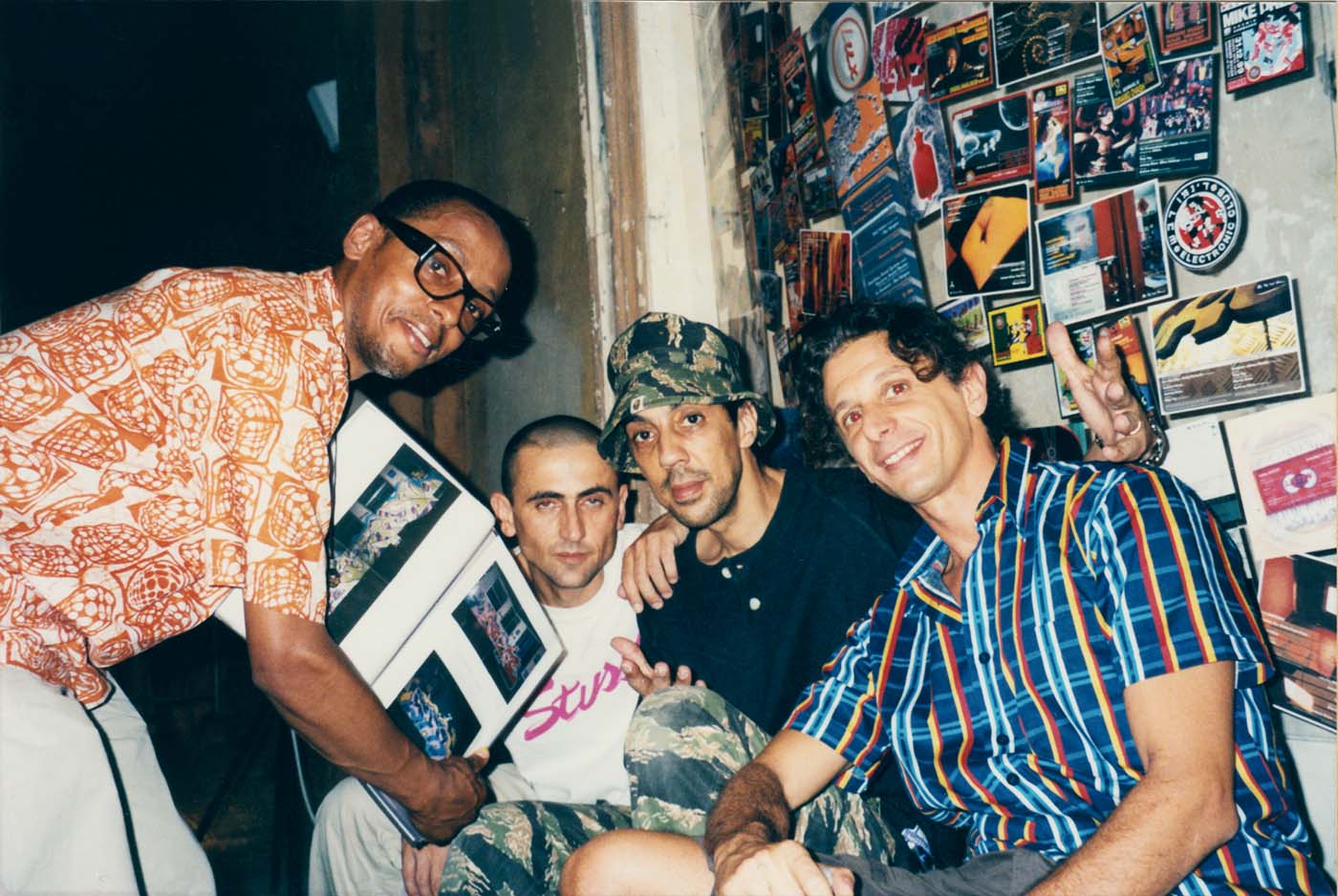
Mode2, Luca Benini, Futura 2000 & Alberto Scabbia in Modena (IT) during “Defumo” event, 2001
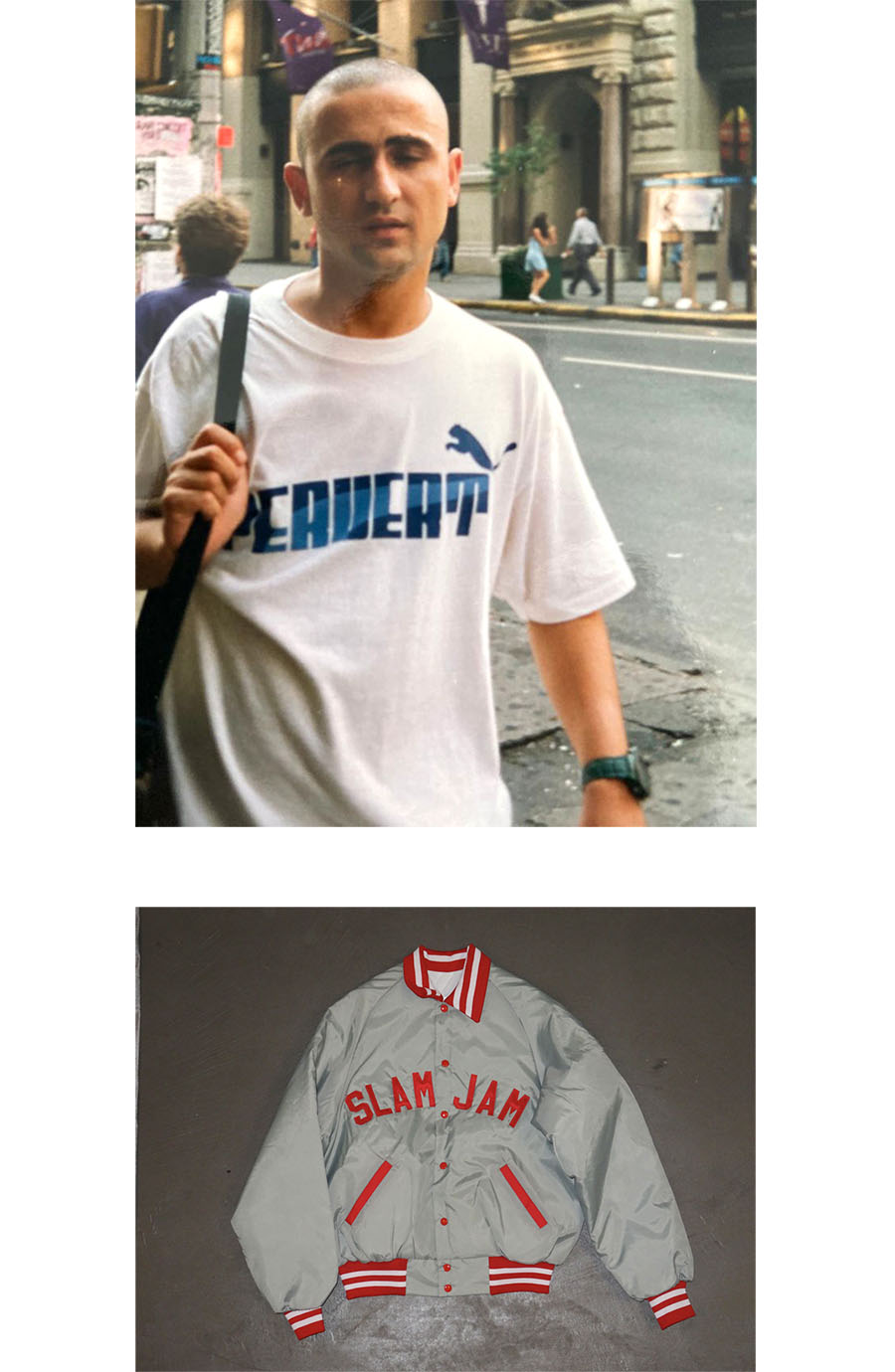
Luca Benini wears a Pervert t-shirt, NY 1993 /
SLAM JAM varsity jacket designed for Slam Jam team, 1993
Over 30 years since its establishment, Slam Jam, street culture brand leader, is opening the doors of its archive for the first time with an exclusive project devised by Nationhood.
Founded by Luca Benini in 1989, Slam Jam was born to serve the underground long before the term “streetwear” existed, becoming the first Italian importer of then unknown brands such as Stüssy. From its headquarter in Ferrara to the fashion capital of Milan, Slam Jam honed a unique and highly distinctive style guided by art, music and clubbing, connecting tribes of like-minded people across the world.
Nationhood is a multidisciplinary studio founded by Achille Filipponi and Matteo Milaneschi. Its goal is to generate new codes and languages in the field of cultural communication, focusing on editorial design. The studio partners with international brands and cultural institutions. Its activities span from the creation of magazines and photography books, through the creative management of digital projects, to curatorship.
The project of the Slam Jam Archivio curated by Nationhood comprises a new location in Slam Jam’s headquarters in Ferrara, and a consultable online atlas stemming from an experimental publishing plan focused on the brand’s cultural heritage.
The private collection of Mr. Benini is now a new cultural resource with its own digital platform, a long list of publications, and various offline off-shoot activities hinging on visual art and culture. Nationhood designed an infinite scroll to connect different contents in a sequence of images, a collision of Lo-Fi cinema and visual brutalism aesthetic. The upshot is a new digital device showing the anthropology of the look and underground subcultures of which Luca Benini was a founding presence: from clubbing on the Riviera Romagnola, London and NY in the early nineties, to the international hip-hop scene and Japan’s noughties fashion neo- avant-garde.
The hyper-photographic atlas is mixed with soundscapes from the around 10,000 vinyls in the collection, offering up the archive in a visual stream that confirms the potential lyricism of chaos and cyberspace as the symbolic place of a new digital romanticism.
The project represents an worthwhile opportunity for all the longtime Slam Jam fans, as well as an opportunity for young fans of urban culture and streetwear, to understand the origins of this current trend which is now so crucial in the balance of the fashion system and of contemporary audio-visual culture.
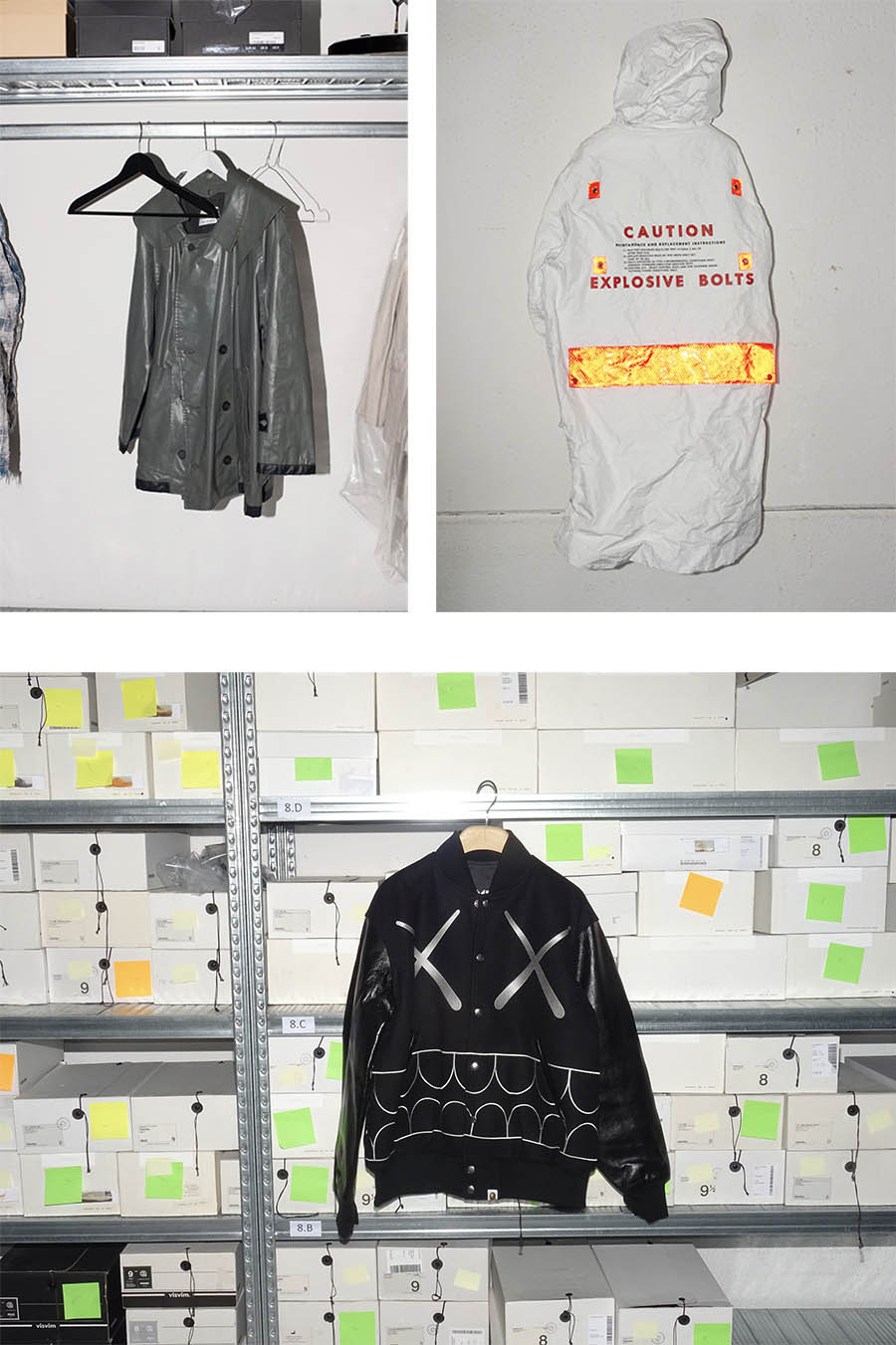
STONE ISLAND raincoat jacket (1983), UNDERCOVER ‘Space Odissey’ parka (2001),
BAPE KAWS chomper varsity jacket (2005)
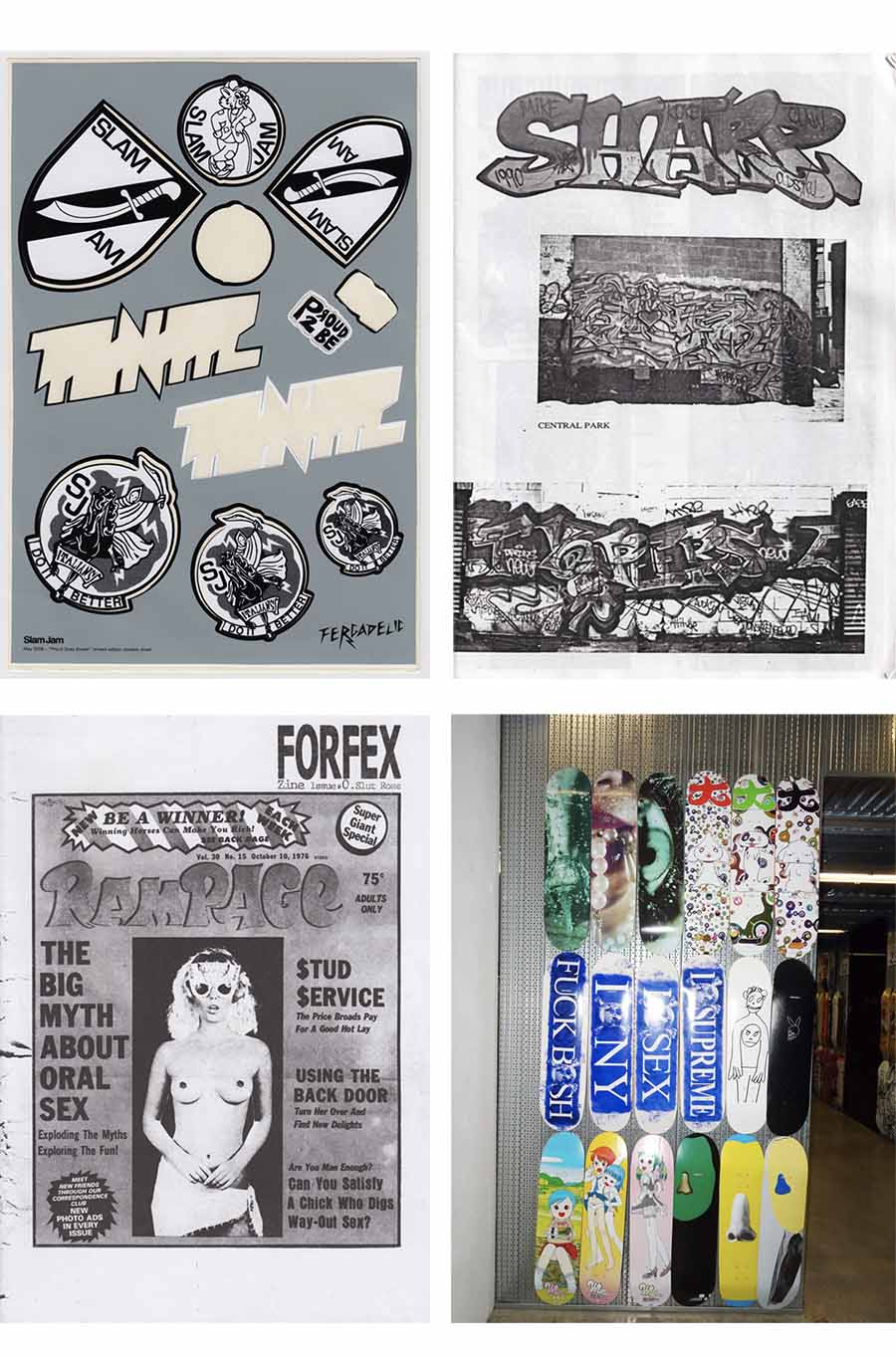
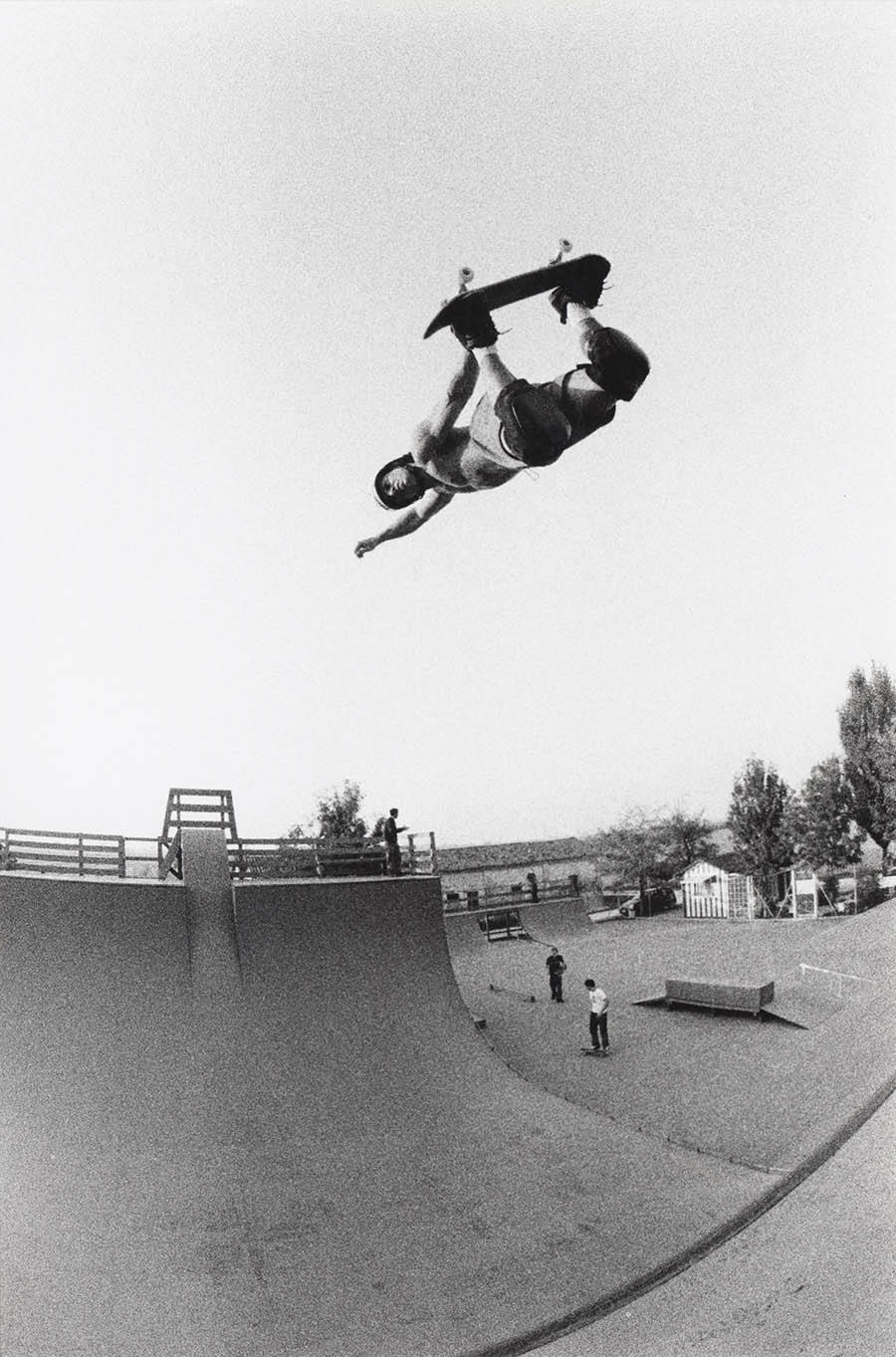
(left) stickers by FERGADELIC (2006), cover of FOREZ ZINE issue 0 ‘Slut Rose’ (2009), TRAP FANZINE issue 2 (1993), Slam Jam SUPREME X ANDREI MOLODKIN ‘FUCK BUSH’ skateboard collection (2004)
(right) Giorgio Zattoni, Zoo York Tour, Ravenna (2001)
‘Tre Risvegli in Tre Tempi’ by GIAN BERTO VANNI (1969)
video shooting from Namaskàr produced by SLAM JAM (2007)
‘Crossing the German Border’ video from CARHARTT SPEKTRA (2008)
Text: Mattia Cantoni
Phoenix Rising

Bohan Phoenix is an Chinese-American born musician that has been gaining traction in the Chinese Hip-Hop community, as well as the American market.
Bohan has a unique approach to his music – he blends Chinese culture with American Hip-Hop and connects the two cultures through his tasteful ear and impressive thought process.
Photographer Bryan Tormey and Bohan Phoenix took a trip from NYC to LA while listening, creating, and processing Bohan’s album and drawing connections their land shares with the Chinese way of life.
To their amazement – they found themselves immersed in Native Navajo land when arriving out west in America and stunned by their findings. The Native American culture was closely tied to Chinese life by way of Serbia and down through the Americas. They began learning about these close connections and found amazing people and stories along the way.
“Phoenix Rising” reflects their journey and findings of Native Navajo culture and their close ties to American-Chinese culture and how close they all are as a people. The story embodies the path Bohan has been creating, drawing parallels between American culture and his native Chinese background, with the hope to prosper despite our failures and rise from catastrophe – stronger, smarter and more powerful than ever.










Photography: Bryan Tormey (@bryantormey)
Talent: Bohan Pheonix (@bohanphoenix)
#WritersRoadmapxValentino - Your Dream is a Word Away
#WritersRoadmapxValentino
Your Dream is a Word Away
In turbulent times, such as those we live in, culture represents a safe place, a bulwark with no borders, as well as a space for escape.
Words are messages, connections and creation of meaning. Their immense power can lead us to reality; their previous weight can make us dream. If “verba volant, scripta manent” is true, the future – in order to be better – will need well-written words, rather than just beautiful words.

Photo courtesy of C.J. Hamilton

Tomi Adeyemi in VALENTINO, March 1st 2020, Paris
In the wake of this idea, Valentino continues its initiatives in support of art and culture, launching the ‘The Writer’s Roadmap’ project. Fifty international aspiring authors-to-be students will be supported in their training through a series of creative workshops chaired by the American-Nigerian writer Tomi Adeyemi, friend of the Maison Valentino, winner of the Hugo and Nebula awards and member of TIME 100 authors. The students were selected after they shared a post on their Instagram accounts explaining their backgrounds, their passion and why they would like to be a part of the course. Submissions have been collected and accepted through December 2, 2020 and the winners were announced on the following day December 3rd.
After graduating at Harvard University with a degree in English literature, Tomi Adeyemi continued her studies in Salvador, focusing on West African mythology, religion and culture. Her career soared in 2018, when her first novel ‘Children of Blood and Bone’ landed the top of The New York Times bestsellers’ list. A fantasy book aimed at an audience of young adults, ‘Children of Blood and Bone’ is able to capture readers with a classic tòpoi of the genre like magic, and at the same time surprise them with more real, explicit and sometimes violent traits. Disney and Lucasfilm confirmed the start of production of a film adaptation of the book.


Photo courtesy of Erynne Hundley
Proper training is essential for a talent to flourish. For this reason, the writing classes are focused on organizing the creative process of each student, on the acquisition of tips and tricks directly provided by Tomi, and in general on encouraging them to pursue their dream of becoming authors.
#WritersRoadmapxValentino is the hashtag used to launch the initiative on social media. It has been made possible thanks to scholarships granted to selected participants, supported by Valentino.
The Italian House Valentino has always been committed to developing talents and promoting cultural diversity. Like never before, we need to rediscover a sense of belonging and to create an active community that benefits everyone. And this creative writing project represents a small step in defining a new standard for the education of the future.
Whether it’s a fantasy story, an intimate novel or simple thoughts written down by hand in a notebook illuminated by the warm light of a bedroom, this initiative promoted by Valentino and led by Tomi Adeyemi guarantees concrete help in making what today is still perceived as a dream into reality: to live by writing.

Photos courtesy of Laine Yuhas
Video courtesy of Shabel Castro
Video courtesy of Laine Yuhas

Text: Mattia Cantoni
Yoga Studios Are the New Country Club


















The concept of French Touch is the representation of Nothing, of a turbo-capitalist and completely postmodern society. Everything is based on removing the meaning of the term French Touch, no longer understood as a musical genre, but as a lifestyle, as the essence of a country that has always held The Coolness, but which is often this excessive attention to lifestyle to remove consistency from reality. The clue of this concept is expressed by Yoga, the coolest sport for body and soul.
As The Point Magazine said: “Yoga speaks to something innately excitable in the European cultural imagination: the seductive idea that you can improve yourself in the interest of all humanity. Stretch your legs, stretch your soul. It’s cosmopolitan egotism: build a better you, build a better planet. “
Photography: Camilla Rocca (@penflont)
Styling: Lodovica Pagano (@paninowithtacchino), Aurora Manni (@aurorarossamanni)
Make-up: Camilla Iacobitti (@c.m.ll)
Hair styling: Clara Spadoni (@clarasp_makeup)
Models: Yaz Yücel (@yazyuceil), Michela Lamorgese (@michi_lamo), Diletta Bellotti (@dilettabellotti), Milana Vakarchuk (@milanavakarchuk), Iva Varvachuk (@unpesos), Madeleine Bex (@madoooshkka), Tomàs Ayerbe (@tom.ayerbe), Julius Westra (@julius.westra), Alessio Hong (@hlessio)
Mark Ceiling/European Vampire (@markceiling)
Lorenzo Sutto/European Vampire (@redbrickhead)
//
Production by European Vampire (@european_vampire)
LOUBISHARK

Like a shark lurking on the ground, dashing and striking, the new Loubishark sneaker from the iconic French footwear maison Christian Louboutin is for sure this season’s sneaker-to-watch. Designed for the urban playground, the Loubishark is a combination of sartorial excellence, technical innovations and the reinterpretation of quintessential vintage design. Designer pays close attention to details, rendering the maximum comfort and greater flexibility to all urban playground goers; availing them to execute all sorts of extreme sportive movements – to jump, to run or to skate, while getting their feet well-protected.


Sleek, streamlining and fashion-forward, Christian Louboutin’s latest Loubishark sneaker amalgamates the Maison’s refined technical savior-faire and innate trendsetting design flair with certain chic and trendy street style inspiration. Mixing materials and colors, the Maison crafts Loubishark’s hi-tech upper part from a total of 13 different components, including suede leather panels, rubber and mesh giving it a modern sports-inflected feel. A contrasting rubber lattice mesh encircles the heel, paying tribute to the architecture of the Maison’s Galerie Véro-Dodat boutique in Paris. Finalizing the upper design as an ingenuity touch, two signature spike studs embellish the hell tab quintessentially represent the timeless Louboutin appeal.
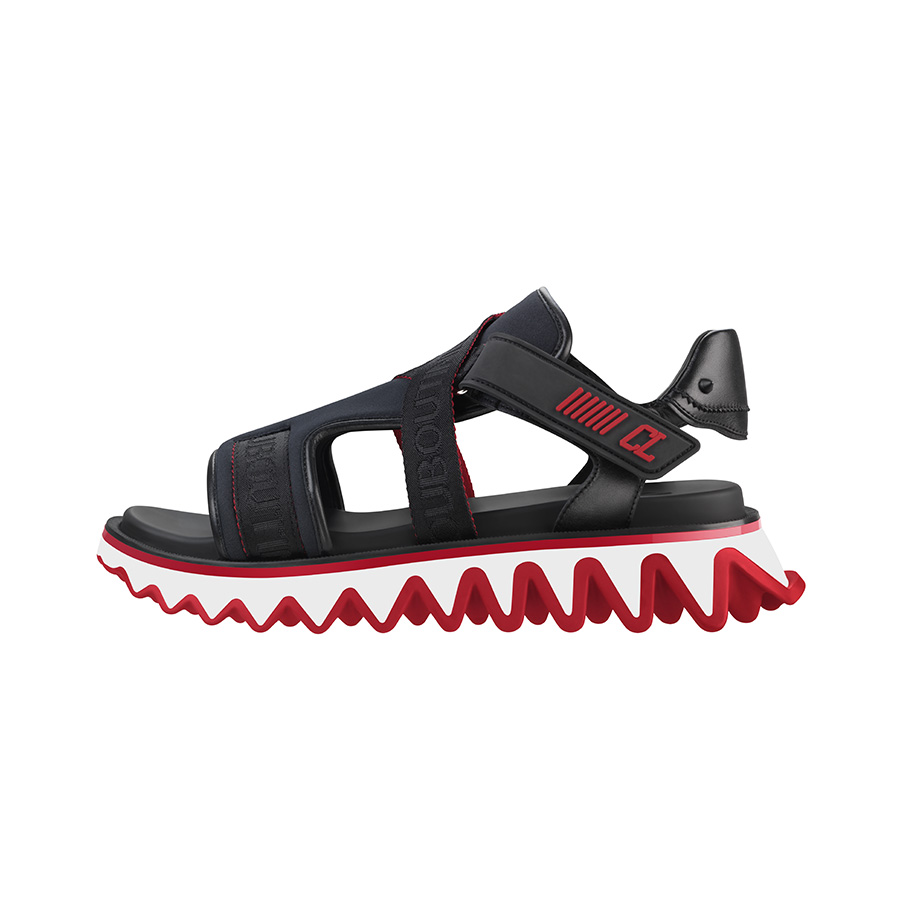

What makes the sneaker so unique and stand out is the eye-catching and unmistakable chunky technical sole. The optic white saw-tooth silhouette sole piped with shocking red edge perfectly emulate the shark’s teeth, the visual impact that Loubishark reinforce strengthen the sneaker’s visual identity while reminding us the Maison’s signature spikes and iconic red bottom sole. Suitable for all style-makers and trendsetters, Loubishark’s bold and appealing style will for sure be the covetable star that snatches instant eyesight on the dazzling and overwhelming urban playground.

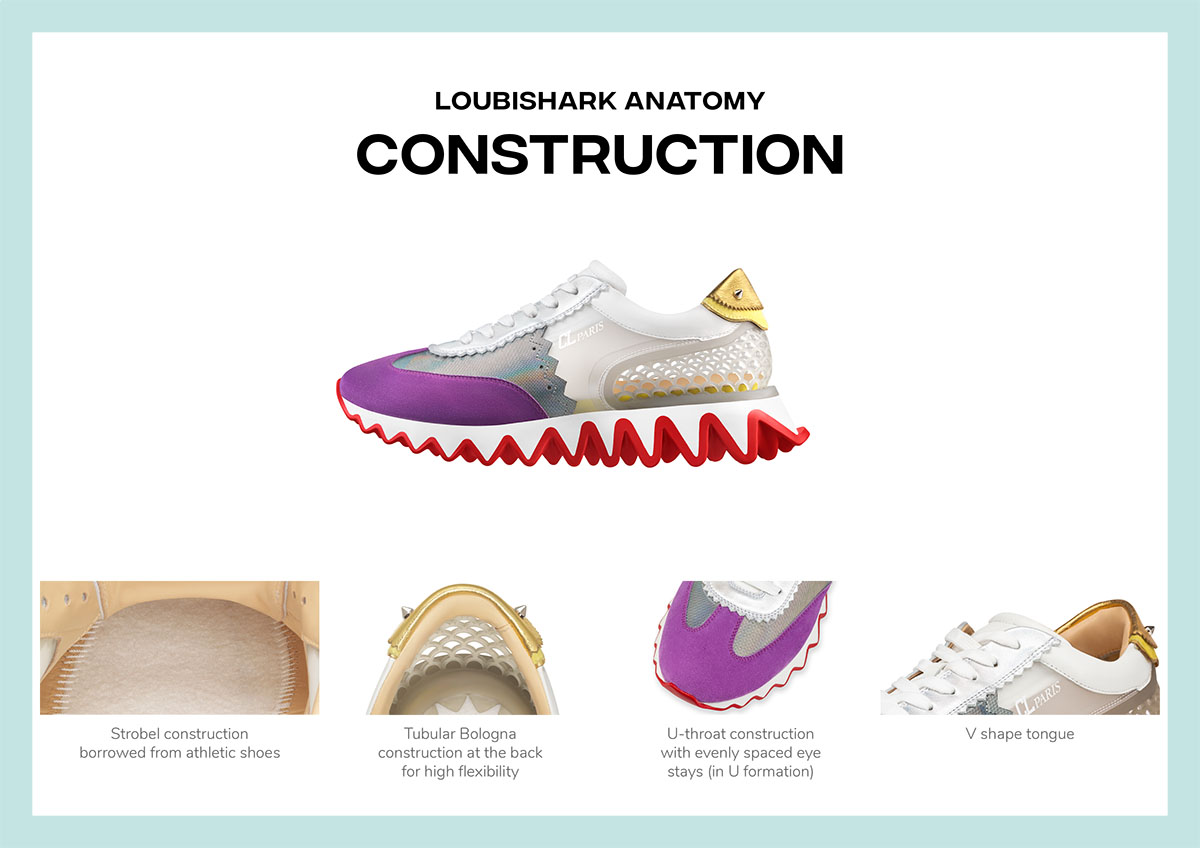



Text: Yves Tsou
Summer Postcard from Home
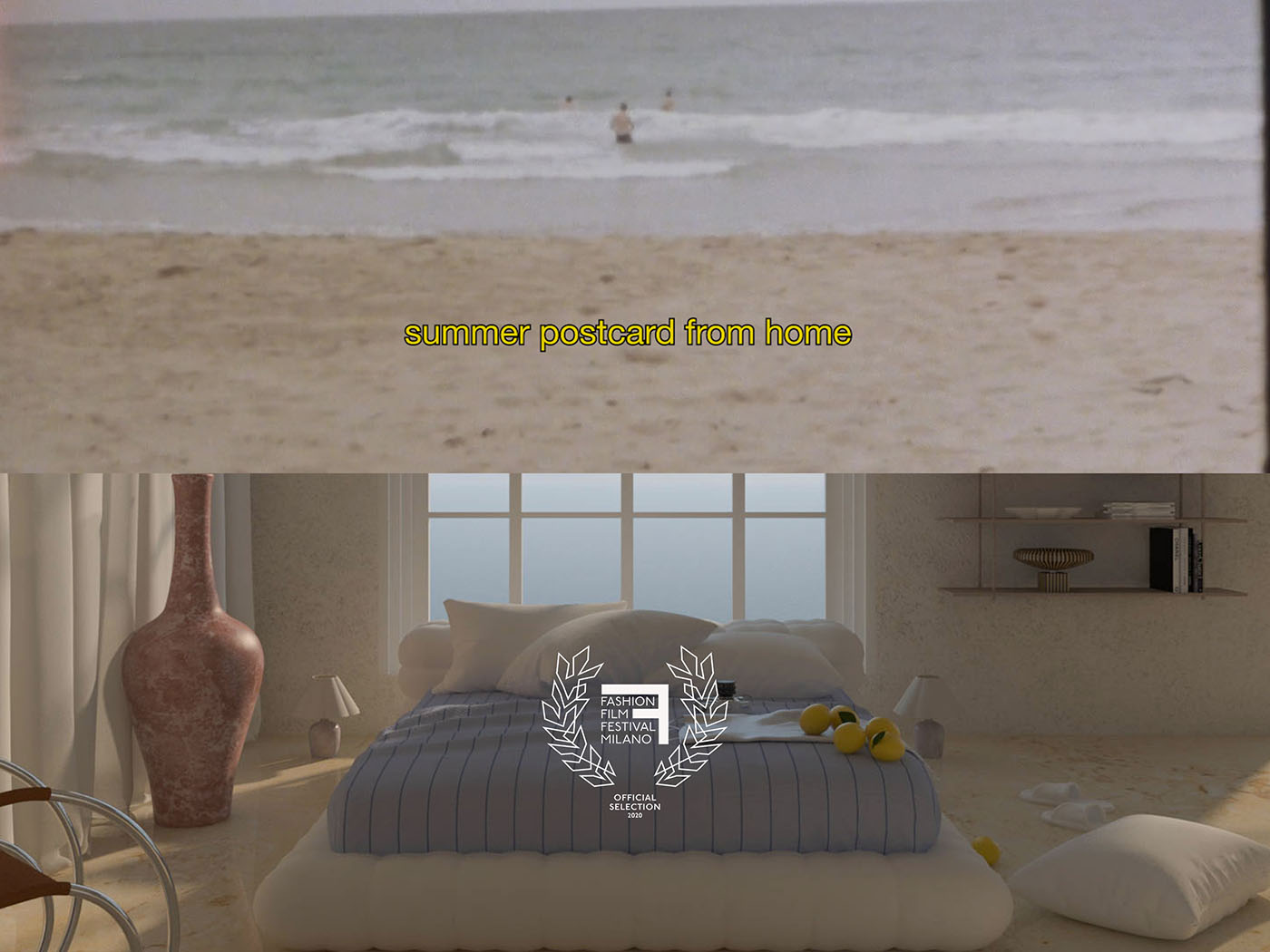
Summer Postcard From Home gives you the feeling of disappearing from the pandemic. Even if only for a minute, you enter a vacation villa in the South of France, your own private hideaway. You find safety and tranquility in a digital haven during a time of global panic and unpredictability. The home’s idyllic interior is full of personal objects, art and craft that dance and conjure up childhood memories, reminiscent of summer and joyfulness. The nostalgic daydreams are a comforting and heartening reminder that even when faced with uncertainty, it is possible to find solace and peace of mind.
Director: Simone Lorusso (@simone_lorusso)
3D Artist & Interior Designer: Anna Broeng (@annabroeng)
3D Visualizator & Animator: Mercedes Luna Larrahona (@merlarrahona)
Music & Sound Design: Giorgio Berti

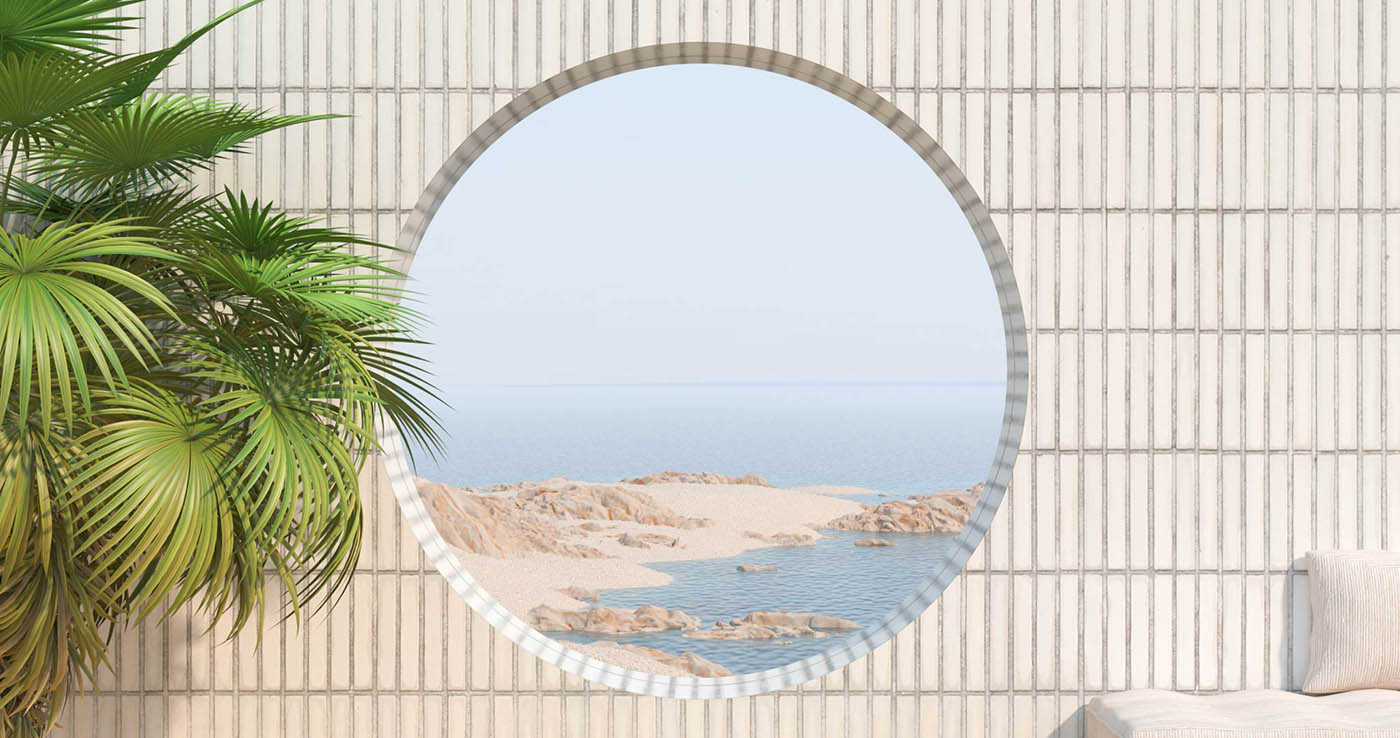
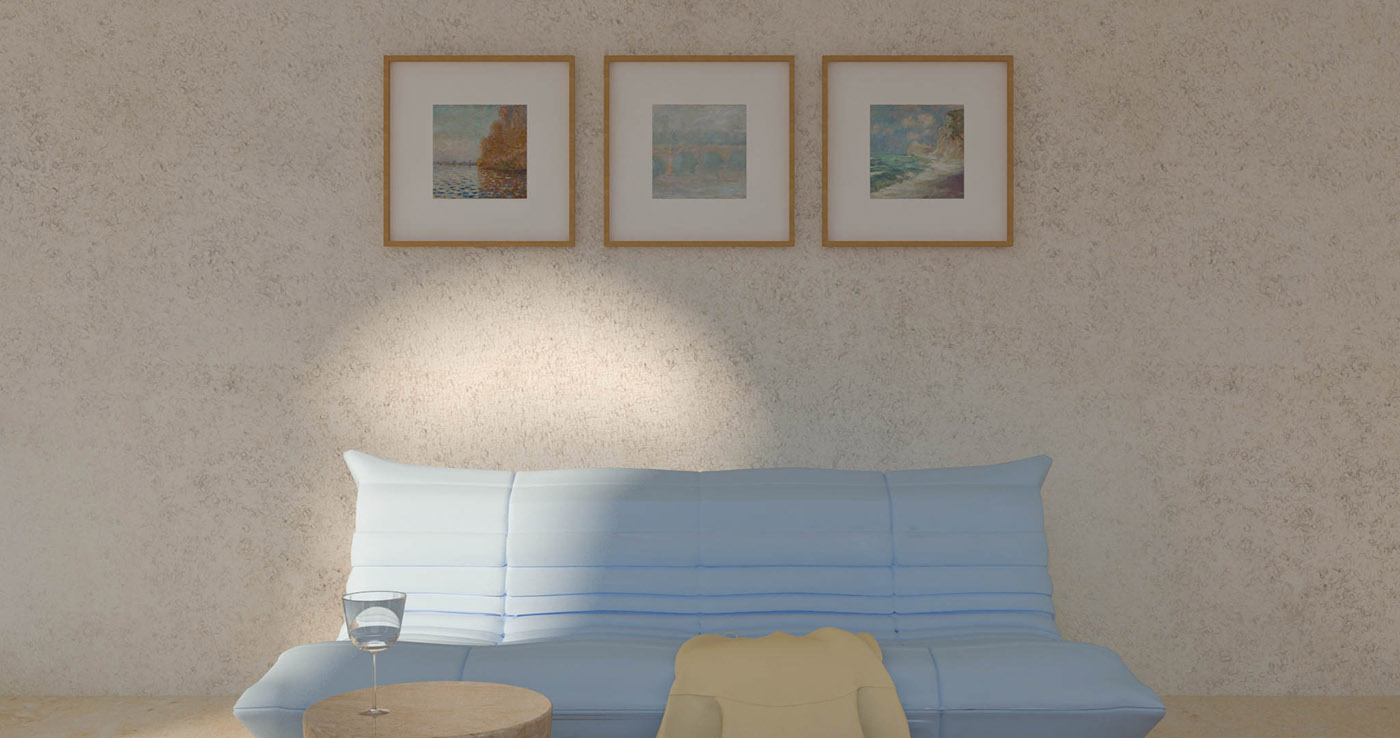

Dark Eros

“Last January I went to see an art performance of an Ukrainian girl, here in Poland. She had to leave Her country due to political reasons. I was simply blown away by Her storytelling and fashion skills, with an absolute, fresh approach of it all.
Soon I decided to style and art direct Her first campaign. It’s something in between fairytale meeting baroque orgy. Our models are refugees, LGBT groups, artists and performers.The editorial and the video are our fetish dream. Dream of living in a country where we can speak and fantasize sex freely. Where we are all equal for no matter what sex and color.
Both Ukraine and Poland are going through rough times. We’re being censored, ruled by extremists who are willing to sacrifice its people over the totalitarian influence. It’s so important for us to be seen. And heard. As Anja Rubik promotes sexual education, here, from over 2 years now, we fight for the right to create the important.”
Following the prologue of Charlotte Tomaszewska, the art & creative director of the project; our editor Yves Tsou of CAP 74024 taps into the backstory and conducts an interview with the girl behind Atelier Planeta, for a deeper understanding on her inspiration, creation and Her thoughts about the current prevalent anti-LGBT political situation in Poland.

What’s your initiation on creating Atelier Planeta?
I could not find the lingerie that I wanted to wear. It neither described me in a way I am nor reflected my sexuality and femininity. So, I decided to сreate a space which will represent my art works, performance practices and passion of fashion. Our planet consist of numerous elements. Same with Planeta, I could be any at different times. I can create an intimate costume, an art piece, arrange a special dinner, set the right mood and comfortable atmosphere for my guests. Planeta’s mission is to help open your mind and soul by using different tools and switching between variety of visual forms.

What’s the inspiration to your fashion and performance art creation?
Bulgakov had a great influence on me. In his book <The Master and Margarita>, he describes a scene at a Satan’s ball. “The men in tailcoat and the women naked. Margarita puts on golden-clasped slippers and diamond crown. Her body douses in blood and rose oil; The incoming guests are greeting Margarita by kissing her knee.” The image of Margarita remained in my head for a long time, I wanted to create this heavy, metal costume she has to wear. I love details and small things. Sometimes just one sentence make me feel creating a piece “them to kiss your knee”. I am also inspired by magic, ceremonies and rituals. Doing performance is like creating a pleasure palace. Choosing the right flower essence, preparing love potions, creating healing power of sex and love.


Do you have any sexual fantasies or fetishes; do they project on your work?
Oh God, yes! I have! There is a saying in Ukraine “Tell me who your friend is and i will tell you who you are”. Instead of words and explanations I show everything through my art. So look carefully and tell me what I like. ❤
What’s the most fascinating part about human bodies, eroticism, fetishes and physical practices?
More recently, I realized that the most fascinating part of the concepts above is having a lover – a partner on the path – is truly one of the life’s great blessing. Celebrate love and celebrate life together.


Do your previous sexual experiences, regardless of who you were with, also affect or inspire your work?
Any experience affects a person’s development and their choices. Consciously or unconsciously. I am a very sensitive person, take everything to heart. So it’s very easy to influence me or marking my soul forever. During artistic practices I’m working with memories a lot. The idea of observing, analyzing and transforming one memory into art piece makes me feel powerful. It’s a kind of therapy, natural treatment for my body and soul, emotional balance based on self care program.
What is sexual freedom to you?
Sex is an extraordinary form of communication. Sexual freedom is losing yourself and finding yourself all at once. This is a practice of making love as if it were a sacred adventure. Not just between two people. Treat your body as a temple. Discover new paths of sexual miracles.


What’s your opinion towards Polish and Ukrainian youth nowadays in terms of their openness in sex and sexuality?
By observing people in Poland and Ukraine I draw my own conclusions that youth are quite open to talk about sexuality and eroticism. But there is a lot of uncertainty, doubt, and fear in their eyes. I see this fear everywhere, in a subway, in a restaurant, on the street. People are afraid to look into each other’s eyes, afraid to smile, afraid to say complements, afraid to look happy and carefree. They are afraid of what the neighbors will think if they find out something “weird” about them. It makes me tired and disappointed but in the same time brings something

Just as in many countries, the equality of sexuality is painstaking; clashes between people from different opinions are inevitable. We’ve seen many protests on the streets of Poland in the past few weeks; regardless the assemblies are anti or pro sexuality equality. It can be regarded as a progression of the society. What’s your idea about it?
Poland is deeply divided now. While the opposition lost this presidential election, 49 percent of the population voted against the newly elected president Andzrej Duda. At the same time, the LGBT movement is far more engaged and active than it was two decades ago. Majority in Poland support legal recognition of same-sex couples. This gives me a hope that society is changing and transforming which is a good sign. However, more time is needed in order to connect the majority.

Corresponding to the previous question, what’s your prospect to the Polish (and Ukrainian) society in terms of this issue in the near future?
I believe that Poland and Ukraine need a sexual revolution. The moral and cultural world has been transformed by the sexual revolution. That requires the leadership of revolutionaries, ready to transform those ideas into a platform for moral transformation. A single individual cannot accomplish a moral revolution, but such revolutions cannot happen without individuals who are willing to make their arguments in public, push them with energy over decades, and never sound retreat. I think that such an explosion should happen soon.
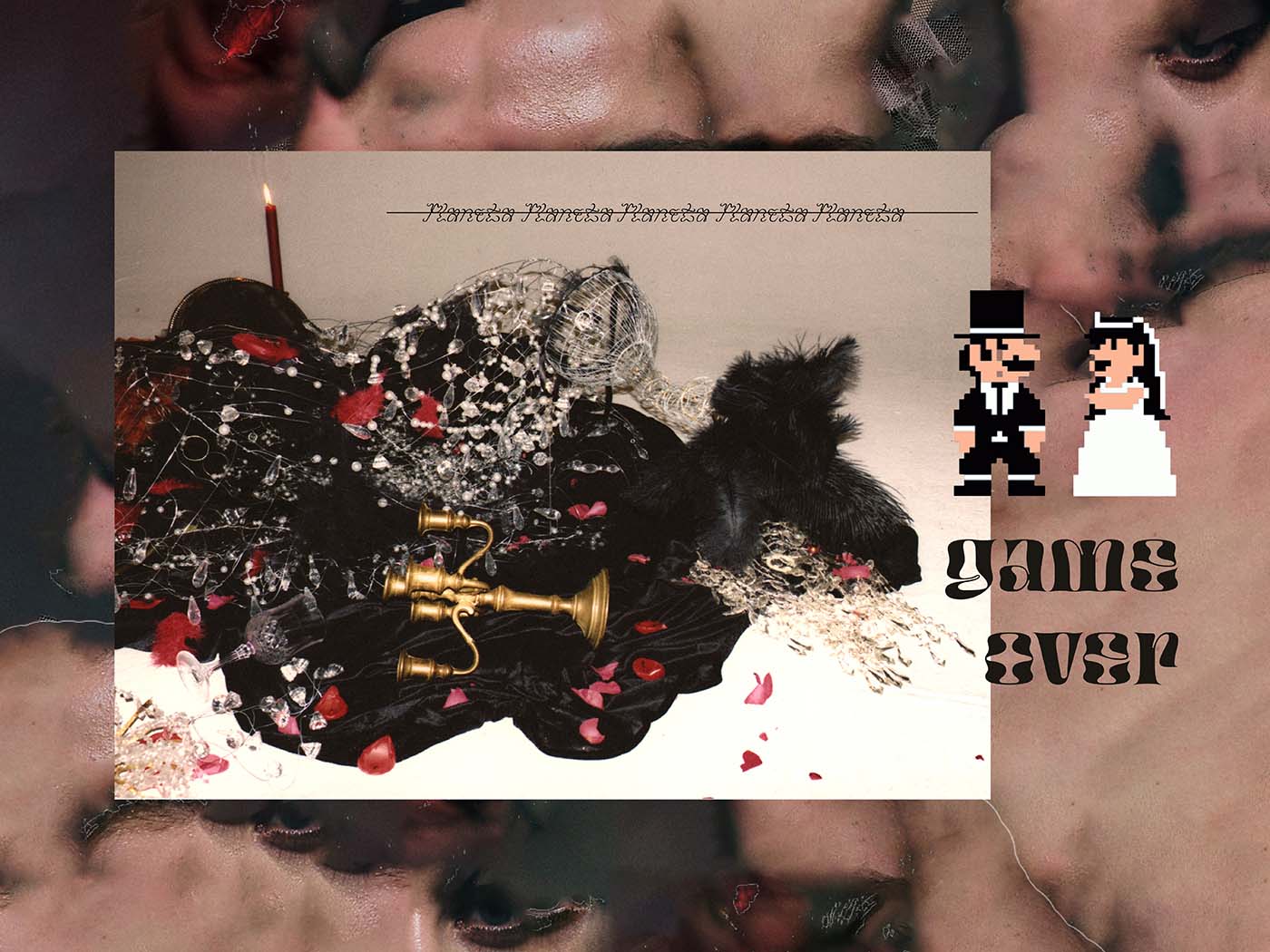
Photography: Łukasz Kuś (@lukasz_kus)
Art & Creative Direction: Charlotte Tomaszewska (@charlottetomas)
Styling: Charlotte Tomaszewska, Planeta (@atelierplaneta)
Make-up: Łucja Siwek (@siwekmakeup)
Hair: Staś Sirchenko (@_stanislavko), Olga Sulipa (@sulipka)
Graphic Design & Collage: Małgorzata Pawlak (@malgopawlak)
//
Video Direction & Editing: Grajper (@grajper)
Video Concept: Charlotte Tomaszewska, Grajper
Music: Anton Tyshulskiy (@tsyhulskyi.a)
Vocal: Taras Gembik (@taras_gembik)
Interview: Yves Tsou
Poland is a Tolerant Country, After All
After a long period of goverment in Poland, not only supporting but also preaching harmful and misleading propaganda about the LGBT community, manifestations of hate of LGBT people reached their climax when the Polish president stated that “LGBT people are not people, but ideology,” and few of the politicians of the leading political party, Law and Justice, stated that LGBT people are less than “normal” human beings. The concept of the project and the descriptions are not a product of my imagination – they reflect the true, real views that are held and proclaimed by many right-wing activists, including many politicians from the leading party of the polish government.


Instagram: (@capitalhim)

Instagram: (@mariolkaarebell)

Instagram: (@skupwyslodkow), (@prince.ostoyski)

Instagram: (@janiestad)

Instagram: (@janczoo), (@rafaelanatol)
Photographer: Paweł Barański (@baranskifashion)
A-Human





Photographer: Ruggero Lupo Mengoni (@ruggerolupo)
Videographer: Micol Locci Cipriani (@micolloccicipriani)
Stylist: Micol Locci Cipriani & Ambra Morini (@ambra.morini)
Model: Genny Casini

